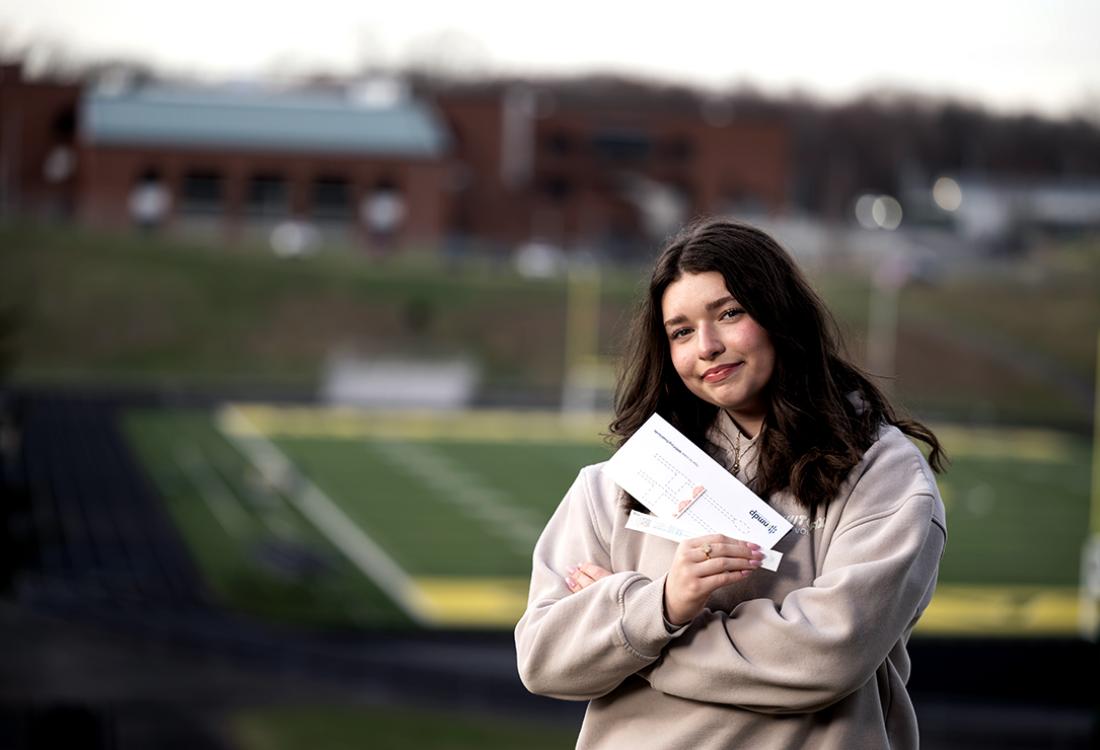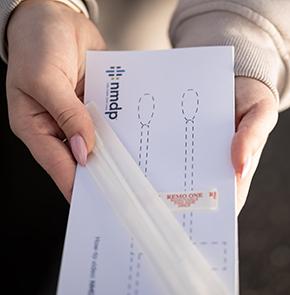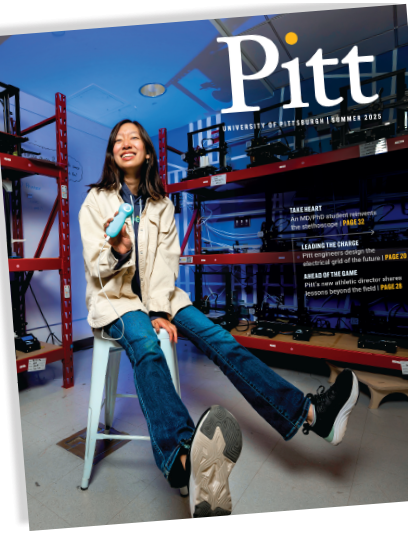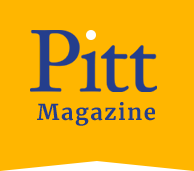
Erin and Bill Bedillion usher daughter Caisen and son Korin into a geneticist’s office at UPMC Children’s Hospital of Pittsburgh. They’ve gathered there for 13-year-old Caisen, who has been dealing with a collection of seemingly disconnected and unexplained ailments since she was an infant, including repeated ear infections and adrenal insufficiency. The results of her daughter’s long-awaited genetic tests are in, but Erin expects this appointment to go like all the others — lots of reassurances and no answers.
To her shock, the doctor pulls up a 20-slide PowerPoint and begins talking at a rapid clip.
Caisen, the doctor explains, was born with a rare genetic disorder called dyskeratosis congenita. Its symptoms vary wildly and manifest differently in each patient, from developmental delays and dental problems to liver scarring and blood cancer, but most cases share one particular outcome — bone marrow failure. That means Caisen will likely need a bone marrow transplant sometime in the not-so-distant future.
While Erin (SOC WK ’10G), Bill (CGS ’14, SPIA ’15G) and Caisen absorb the news, Korin slowly and shyly pushes his hand into the air.
“I’ll give her my bone marrow,” he offers.
Unfortunately, as the family soon learns, it’s not as easy as this sweet little brother moment suggests.

Bone marrow donors are matched to patients based on proteins called human leukocyte antigens (HLA). The closer the HLA type, the better the match. Siblings are most likely to share a type, so they’re tested first. But when there’s no familial match — true in about 70% of families, including the Bedillions — patients turn to the National Marrow Donor Program (NMDP).
According to NMDP, about 7,500 people are waiting for a donor match at any given time, and just half of them will find one. That’s partly because so few Americans are registered donors; the NMDP estimates about 2%.
As of now, not one of them matches Caisen.
“For a few months, I was really upset and really scared, and then I was like, ‘Are you going to be scared for 15 years?’” Erin says. “A lot of kids who are waiting for bone marrow transplants have cancer. But I look at my child, and she sleeps in her bed every night. She goes to school, she has sleepovers, she gets to babysit, she can do chores, she hugs me all the time. There is so much to be grateful for, and we are just not getting sucked into this swamp of self-pity.”
Instead, Erin and Bill—exes, co-parents, and social workers accustomed to dealing with trying circumstances—decided to take the numbers problem as a challenge. They have vowed to register as many bone marrow donors as possible to find one for their daughter and all the other waiting kids.
“Everyone,” Erin says. “I want everyone to register and everyone to find a match.”
The registration process is simple. In the year since Caisen’s diagnosis, she and her parents have shown up at local events — a Pitt tailgate, Hampton Community Days, the Deer Lakes Youth Football Cheer-a-Thon — with kits provided by the NMDP. They tell people their story, and those who are willing register using a QR code. They then swab the inside of each cheek for 10 seconds and drop the swabs in an envelope, which Erin mails off to the NMDP. Some events are boons; others are busts.
“If an event yields two swabs, it’s worth it,” Bill says. “That’s two more than we had before.”
Bone marrow donation has a bit of a marketing problem, Erin explains. Though most donors only need to take four hours out of their day to undergo a painless process akin to donating plasma, a select few need to endure a needle to the hip to extract bone marrow directly. The possibility of that scenario scares off many potential donors and has earned the family some less-than-encouraging responses to their donation inquiries. But, as Erin points out, the needle method is safe, and it’s the same procedure Caisen needs every single year to test her marrow levels.
“If a 14-year-old can do it, you can do it,” she says. “The more we can normalize this conversation and make it so everyone understands the process and importance of donation, the better. It’s a really small price to pay to literally save someone’s life.”



